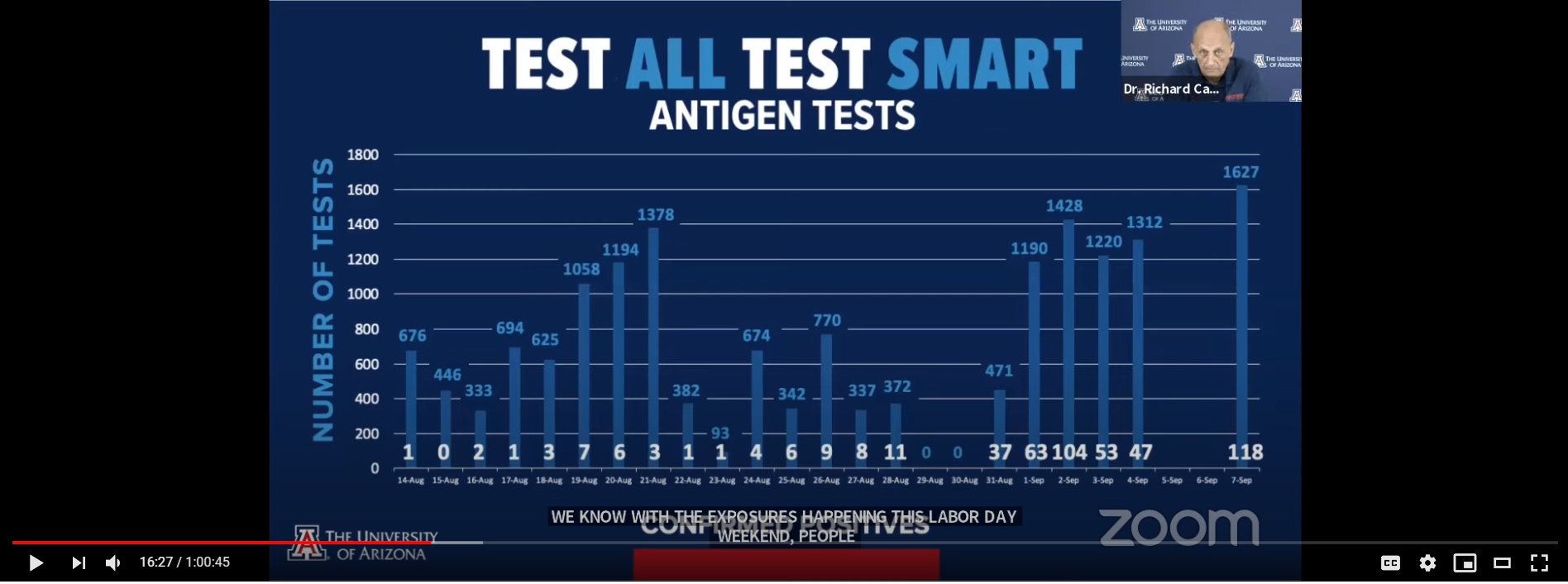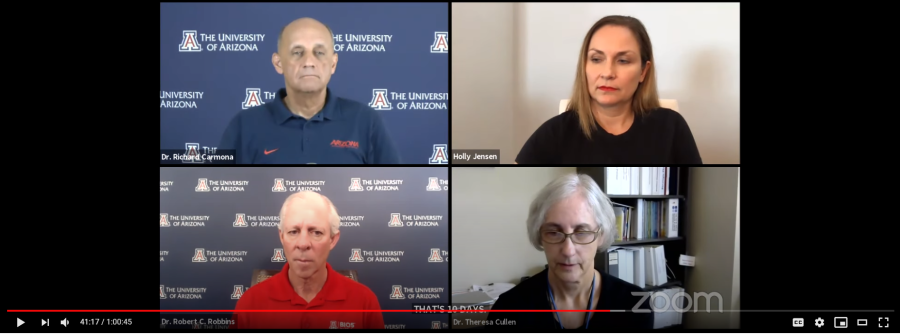The University of Arizona Reentry Task Force met Wednesday, Sept. 9 to speak about false positives in testing, clarifications in the 3Ts initiative and resource utilization.
President Robert Robbins began the press conference by acknowledging the instance of false positives among individuals that were tested on UA’s women soccer team. Robbins said the detection of the false positive were discovered due to inconsistencies in contact tracing data, which Robbins said is evidence that the “Test, Trace, Treat” initiative is self-corrective.
Robbins also clarified that UA was going to continue testing students both on and off campus, citing a misinformed report that the university was only testing students on campus. The university will also continue to utilize wastewater testing on each dorm, doing do about three times per week.
The university is working with Pima county and the city of Tucson on contact-tracing; UA has made the COVIDWatch app available for residents, employers and employees around the university area.
While the data may be cause for optimism, Robbins noted that there are some still not complying with COVID-19 mitigation measures. He said that 13 homes have been visited by university officials in nine different neighborhoods regarding gatherings that were not in accordance with basic public health guidelines.
Robbins also made clear his concerns going into influenza season.
“I’ve talked to many people who have already got their influenza shot,” Robbins said. “We are going to strongly encourage, if not mandate, that everyone at the University have an influenza shot for this year because it’s going to be so important as we enter the regular flu season. We need to do everything we can to minimize the spread of this very highly contagious and transmittable virus that can be deadly, especially to the most vulnerable population.”
Task Force Director Dr. Richard Carmona spoke about the data regarding COVID-19 transmission and resource utilization.
Notable data points included on campus isolation bed occupancy, ICU bed and ventilator use and the number of confirmed positive cases.
Out of the 417 isolation beds available, 91 beds are currently being occupied on campus (21.82% occupancy), Carmona added that the university was offering isolation beds for positive off campus students as needed. Currently, 90 of the beds are occupied by students who live on campus and one bed is being occupied by an off-campus student.
ICU bed occupancy has slightly decreased to about 75% capacity and ventilator use continued to decline, now at about 30%.

The university has seen a drastic bump in positive antigen tests within the past week. From Sept. 2 to Sept. 7, there were 322 confirmed positive antigen tests out of 5,587 individuals tested.
Follow Kristijan Barnjak on Twitter









